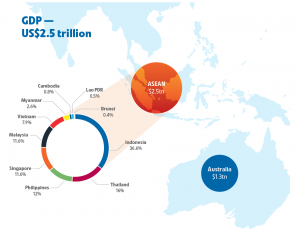Are your employees engaged at work?
Employee engagement is a key point for a well-established and profitable business.
It can be seen as the emotional commitment the employee has to the organisation and its goals.
This emotional commitment means that engaged employees actually care about their work and the company they work for. They are not just motivated by their next payday or waiting for the next promotion. They work on behalf of the organisation’s goals.
—
Benefits
Taking care of your employee engagement can lead to many benefits for your company in terms of costs and efficiency. In fact, having engaged employees increase general wellbeing at work. The American Psychological Association estimates that more than $500 billion is lost every year due to workplace stress. Employees will feel happier if they feel like they are part of the business and not just working for one.
1 | Boost productivity
According to an Automatic Data Processing report “Employee Engagement: Power Your Bottom Line”, organisations with engaged workers are 18% more productive than their competitors, 12% more profitable and have employees who are 57% more effective and 87% less likely to leave.
2 | Lower your turnover
A high turnover rate costs both money and time to the company. Furthermore, it can also interfere with your daily operations of the business and even affect the company’s overall efficiency. This can even cause a higher, cascading turnover rate throughout the company, at the extreme end (as more people bandwagon).
3 | Lower absences from work
According to a report from Gallup “State of the American Workplace Report” (featuring 195,000 US employees), building good employee engagement can reduce the absence from work by 41%. Engaged employees will make a point of going to work rather than trying to avoid it altogether.
Best practice employee engagement can have many more benefits that you would not even have thought of. For example, it can increase employees’ safety by 70% as employees are committed to adhering to best practices that prevent safety incidents.
—
Simple ways to boost engagement
Here is a list of simple ideas that you can use to improve your employees engagement:
- Always put your employees first: don’t forget that there is no business without them;
- Promote training: show your employees that you give them all the keys to succeed and you care about their growth both personally and professionally;
- Provide clear career opportunities: it will motivate your employees to be more involved;
- Ask for realistic and manageable goals: employees will make an effort to reach them without being discouraged;
- Give them responsibilities: show them that they are useful and you believe in their capacity to do their job;
- Focus on communication: employees need to know what is going on to feel integrated;
- Employee engagement surveys: why don’t you just ask them what would make them more engaged? Never underestimate the wealth of ideas they have to share with you and your business!
Source: Engaged Workplaces Are Safer for Employees, Employee Engagement: Power Your Bottom Line, State of the American Workplace Report, How To Establish A Culture Of Employee Engagement, What Is Employee Engagement, 5 reasons why employee engagement is important, 14 Benefits of Employee Engagement – Backed By Research.
—
Talk with us to boost your employee engagement today.
Contact us for a no obligation, complimentary 2 hour consultation to talk over your needs.

